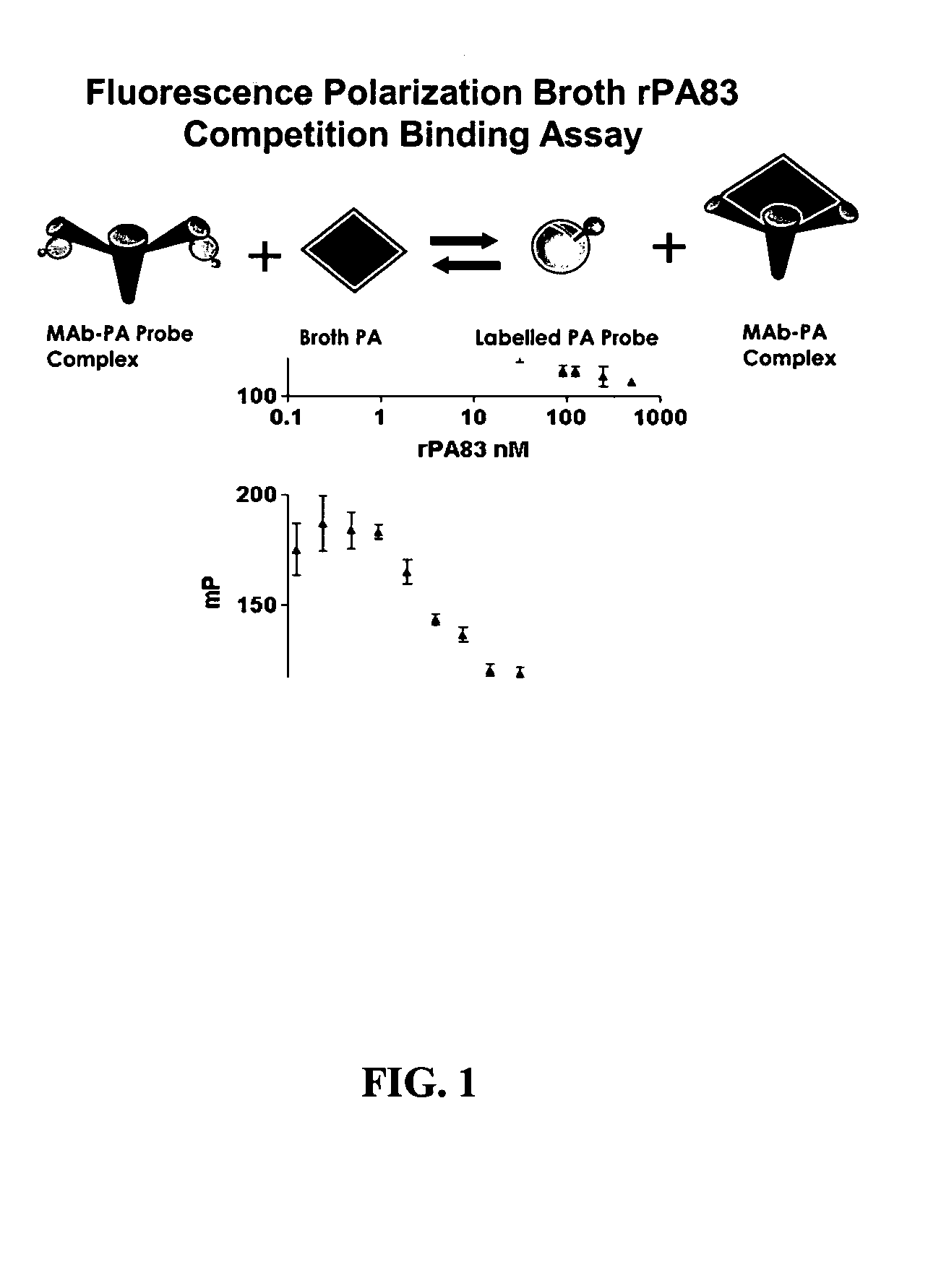Rapid immunoassay of anthrax protective antigen in vaccine cultures and bodily fluids by fluorescence polarization
- Summary
- Abstract
- Description
- Claims
- Application Information
AI Technical Summary
Problems solved by technology
Method used
Image
Examples
Embodiment Construction
Competitive FP Assay for Measuring Broth Protective Antigen, Lethal Factor and Endema Factor of Bacillus anthracis
[0041] Quantitative, real-time monitoring of growing bacterial cultures is necessary to ensure maximum production of important bacterial proteins in vaccine production. Bacillus anthracis is of particular importance due to its potential public health and military focus as a potential bioterrorism weapon. Monitoring of growing cultures of B. anthracis is conducted by the following steps:
[0042] a) Add 10 .mu.l of labeled competitor peptide (e.g. FITC labeled PA, lethal factor or edema factor) in 1 ml buffer;
[0043] b) Read blank;
[0044] c) Add 20 .mu.l of monoclonal antibody to target protein in said 1 ml buffer;
[0045] d) Incubate for 2 minutes;
[0046] e) Read the FP of the tracer;
[0047] f) Add 10 .mu.l of culture broth to said 1 ml buffer in step d);
[0048] g) Read decrease in mP. The decrease in mP is proportional to the PA concentration.
[0049] Culture broths of B. anthracis...
PUM
| Property | Measurement | Unit |
|---|---|---|
| Fraction | aaaaa | aaaaa |
| Time | aaaaa | aaaaa |
| Time | aaaaa | aaaaa |
Abstract
Description
Claims
Application Information
 Login to View More
Login to View More - R&D
- Intellectual Property
- Life Sciences
- Materials
- Tech Scout
- Unparalleled Data Quality
- Higher Quality Content
- 60% Fewer Hallucinations
Browse by: Latest US Patents, China's latest patents, Technical Efficacy Thesaurus, Application Domain, Technology Topic, Popular Technical Reports.
© 2025 PatSnap. All rights reserved.Legal|Privacy policy|Modern Slavery Act Transparency Statement|Sitemap|About US| Contact US: help@patsnap.com

